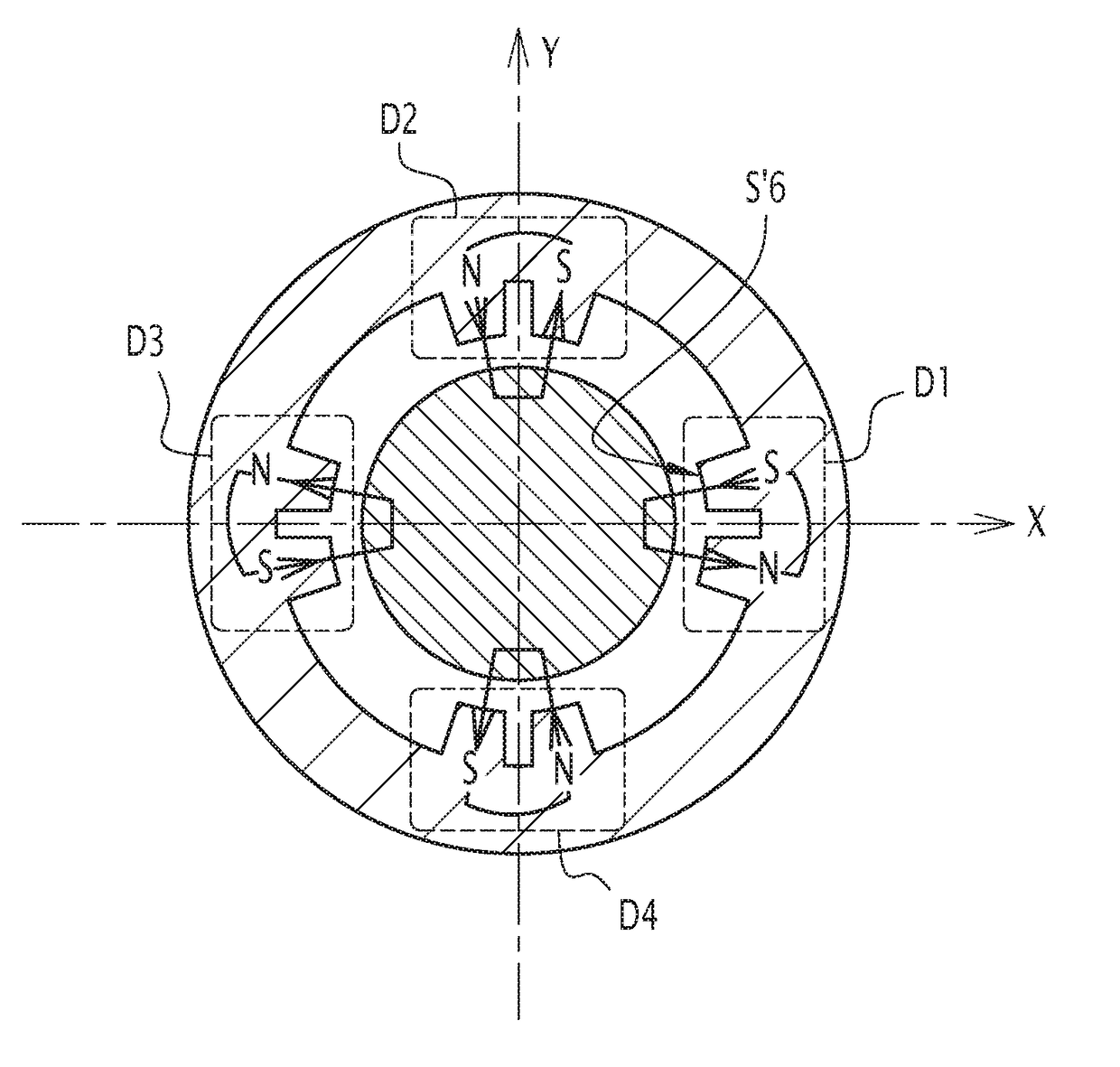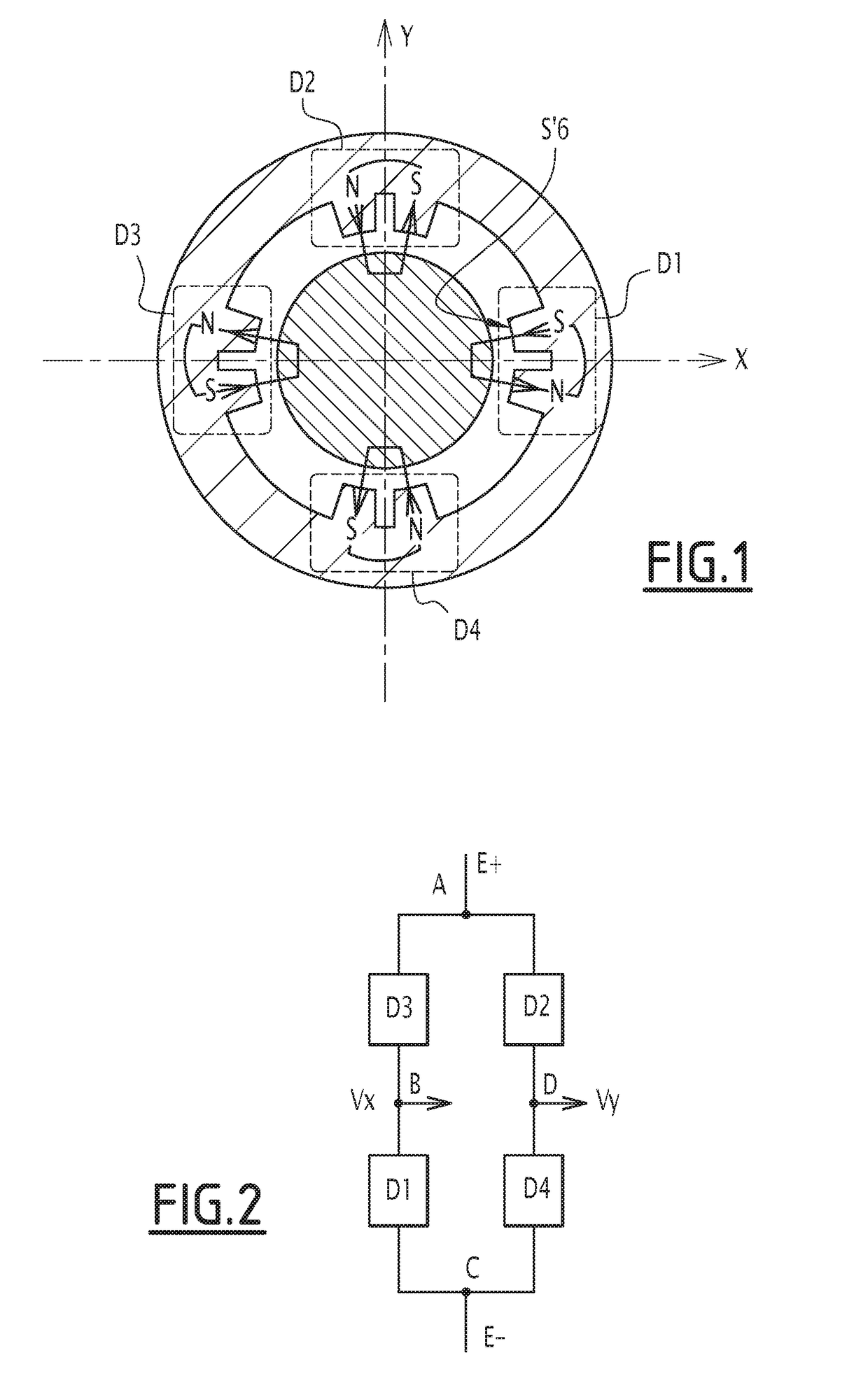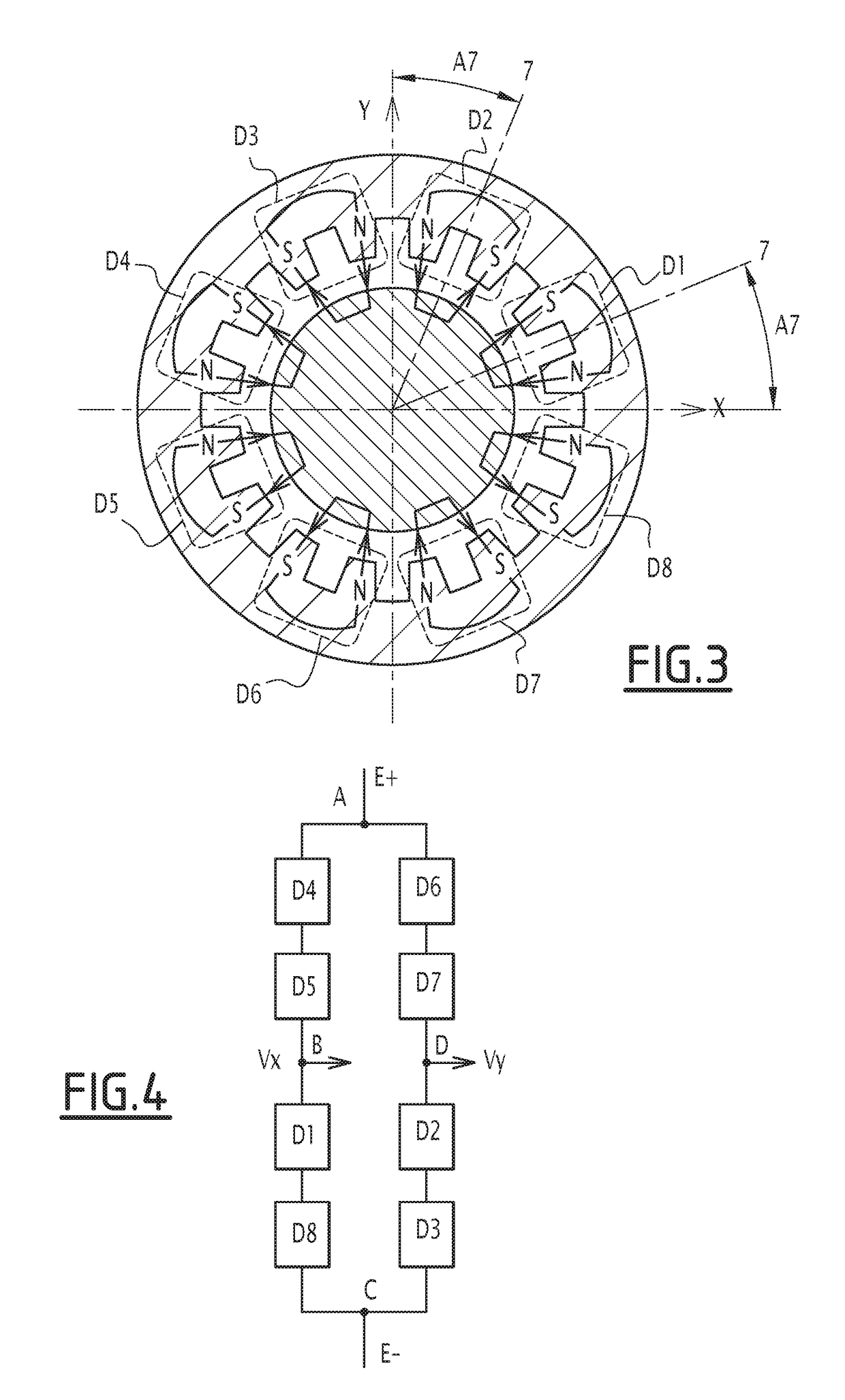Radial position sensor
a position sensor and radial technology, applied in the direction of converting sensor output, mechanical energy handling, instruments, etc., can solve the problem that the rotor is never perfectly cylindrical, and achieve the effect of less copper and less sensitive to rotor surface defects
- Summary
- Abstract
- Description
- Claims
- Application Information
AI Technical Summary
Benefits of technology
Problems solved by technology
Method used
Image
Examples
Embodiment Construction
[0025]FIG. 5 represents a radial position sensor for measuring the radial position of a rotor 4 within a stator 2. The rotor 4 is made of ferromagnetic material. The sensor includes four poles. Each pole is formed by an electromagnet Z1, Z2, Z3 or Z4. The electromagnets Z1, Z2, Z3 and Z4 are arranged on the inner surface of stator 2. The sensor is then a 4 poles radial position sensor. As the sensor of FIG. 1, this sensor is capable of rejecting even harmonics representative of rotor defects. Indeed, the rotor is never perfectly cylindrical.
[0026]The electromagnets Z1, Z2, Z3 and Z4 include each a non-represented coil that is wound around a core 6 protruding internally with respect to the inner surface of the stator 2. Each coil has the same number of turns. This number of turns is the same than that of coils belonging to prior art sensors. The electromagnets Z1 to Z4 are distributed with alternating magnetic polarities N, S around the entire circumference of the stator 2 and with a...
PUM
 Login to View More
Login to View More Abstract
Description
Claims
Application Information
 Login to View More
Login to View More - R&D
- Intellectual Property
- Life Sciences
- Materials
- Tech Scout
- Unparalleled Data Quality
- Higher Quality Content
- 60% Fewer Hallucinations
Browse by: Latest US Patents, China's latest patents, Technical Efficacy Thesaurus, Application Domain, Technology Topic, Popular Technical Reports.
© 2025 PatSnap. All rights reserved.Legal|Privacy policy|Modern Slavery Act Transparency Statement|Sitemap|About US| Contact US: help@patsnap.com



